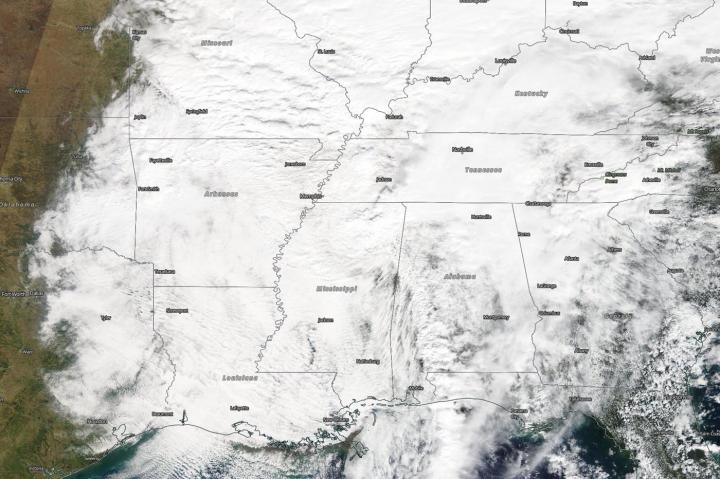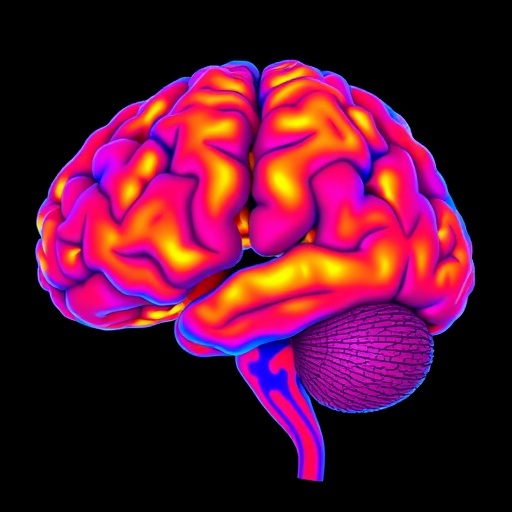
Credit: NASA Worldview
Tropical Depression 17 strengthened briefly into a tropical storm on the same day it formed, Oct. 25. NASA’s Terra satellite captured a look at the clouds associated with its remnants merging with a cold front over the southern U.S.
Tropical Depression 17 formed early on Friday, Oct. 25 and by 5 p.m. EDT it had strengthened and organized into a tropical storm and was renamed Olga. However, by 11 p.m. EDT, Olga transitioned again into a post-tropical storm.
The last advisory on Tropical Storm Olga was issued at 11 p.m. EDT on Oct. 25 by the National Hurricane Center or NHC. At that time, the center of Post-Tropical Cyclone Olga was located near latitude 27.8 degrees north and longitude 92.2 degrees west. The post-tropical cyclone was moving toward the northeast near 17 mph (28 kph) and maximum sustained winds were near 50 mph (85 kph) and weakening.
At that time, the NHC discussion said, “Earlier this evening, the last 2 passes through Olga made by an Air Force Reserve Hurricane Hunter aircraft showed that the cyclone had become embedded within a cold front. Strong northwesterly flow was observed within 10 nautical miles northwest of Olga’s center and a sharp temperature and dew point gradient was measured across the cyclone. It does not appear that Olga has separated from the front in any significant way since the plane left. In fact, recent surface observations suggest that either the front passes through the center of the cyclone or its circulation has become poorly defined. Based on all these data, Olga is now classified as post-tropical and this is the last NHC advisory.”
Since Olga became entangled with the front, the winds and seas associated the front were then considered to be representative of the overall system.
Olga’s remnants moved through the Mississippi Valley today and toward the Great Lakes on Sunday, Oct. 27.
###
Media Contact
Rob Gutro
[email protected]
Original Source
https:/




